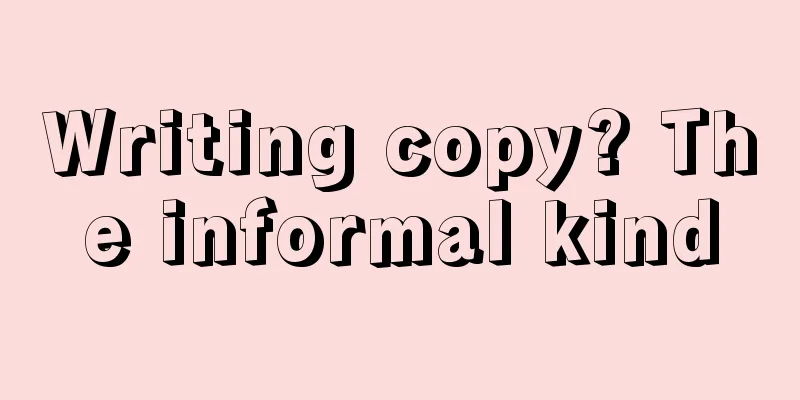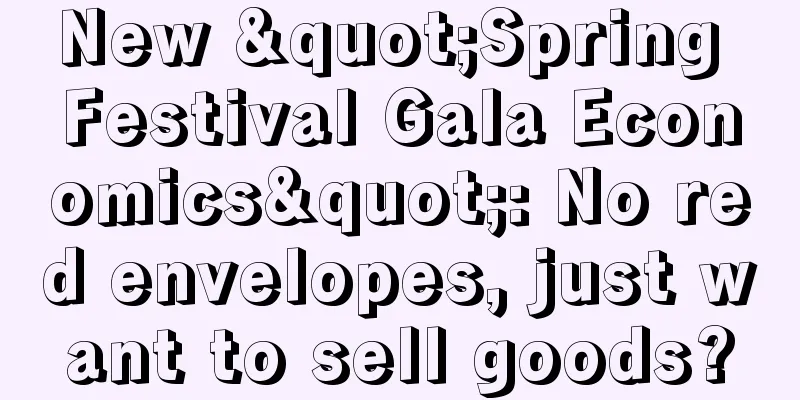9 very advanced homophonic pun copywriting

Where there are people, there are rivers and lakes; where there are copywriting, there are "puns". Puns always make people love and hate them. On the one hand, it is one of the most vital forms of copywriting. In ancient times, there were various auspicious words with homophones. Today, homophone copywriting can be seen everywhere. Due to its low threshold and high relevance, it has become the simplest way to make copywriting appear less bland. As the saying goes: If creativity is not enough, use homophones to make up for it. Its super high cost-effectiveness is deeply loved by copywriters. But on the other hand, it is precisely because of the low threshold that homophonic puns have become a hotbed for many copywriters to be lazy and take it easy. At the same time, the humorous feeling of the homophony itself (think about why there are so many homophonic puns) also makes it seem not serious enough, and it is difficult to write with a sense of sophistication. However, the above disadvantages are only superficial. The deeper reason lies in the fact that the creative correlation brought by homophonic pun copywriting is a weak correlation - based on the correlation between text and pronunciation. Whether the copy is creative and can impress people depends on the creative discovery of the correlation between people/things/objects, but most puns only stay on the surface and cannot penetrate people's hearts. But this does not mean that homophonic puns cannot produce good copywriting. As long as the above problems can be avoided, the pronunciation is not far-fetched, the meaning is logical, and it truly helps to express the copywriting's proposition, then the cleverness and relevance brought by homophony can still become the highlight of the copywriting. Anything truly clever is always welcome, and puns are no exception. Today we will look at some more advanced homophonic copywriting: 01
This is the poster copy written by Yu Jiang for the "CCTV News National Museum Calendar", and the protagonist of the copy is the "Liangzhu Inscribed Black Pottery Jar". Liangzhu is one of the birthplaces of Chinese civilization, more than 5,000 years ago. The ancestors at that time carved "words" on jars to record their daily lives. "The name of the jar is Liangzhu" means that the name of the jar contains the word "Liangzhu". At the same time, this jar is also a representative of Liangzhu culture, so it is homophonic to "named". Originated from Liangzhu, civilization has continued on the land of China, so it is "The name of the jar is Liangzhu, and the surname is Huaxia." This sentence embodies 5,000 years of civilization history and also begins the brilliant story of the Chinese nation. As the author himself said, "Five thousand years into the shape of a jar, touching it, what would happen. A jar like this, full of light." 02
From Weibo @同音梗研究院, a nine-character poem tells a sad story. "亮在原地" is a homophone of "凉在原地", which echoes the title "Street Light". The former describes abandonment and isolation, while the latter is full of scene sense, making people imagine the previous appointment of the two under the street light and the subsequent unpleasant parting. This illuminated abandonment seems to let the whole world see your frustration, adding several times the brightness to this loneliness. It is not only the cleverness of the two homophones, but also a double reinforcement of the theme. 03
Vans is born with a pun physique. In China, its "birth pun" is "Wang Anshi", and in foreign countries it is the word "Once". The free and avant-garde skateboarding culture that Vans upholds coincides with the meaning of Once.
You only live once, so why not live it freely? If you want to live it freely, how can you live without a pair of Vans? 04
From the ad film "Nescafé Jars" launched by Nestlé Coffee in Canada this year The film tells the story of how people make the most of used Nestlé coffee glass bottles, showing the various possibilities of coffee bottles - coin storage, snack jars, children's pen holders, handmade sundry boxes, artist brush rinsers, flower pots, etc. On the surface, it advocates recycling, but on a deeper level, it uses a bottle to expand the brand's existence scenarios, penetrating from a simple coffee bottle to all aspects of life, establishing emotional connections with users in various scenarios, making coffee bottles ubiquitous, and allowing Nestlé to fill every corner of users' lives, which just happens to correspond to the slogan of Nestlé Canada: Make your world. Theme copy:
Literal translation: Every empty bottle is full of possibilities I wrote a Chinese translation for it: "Empty bottle creates another possibility" It is creating something out of nothing using the original waste, and it is also creating possibilities using empty bottles. Both meanings are accurate expressions of the advertising theme, so it is a good homophonic pun copy. 05
This is a copywriting practice activity from the "Copywriting Free Shipping Knowledge Planet". The author is planet member @Doris, and the practice topic is a series of poster copywriting for Velingrad mineral water in Bulgaria. Velingrad is a Bulgarian mineral water brand. The water source comes from 1,300 meters below the surface of the Rhodope Mountains. Its main theme is natural health. The copywriting approaches the issue from the perspective of the connection between man and nature, and proposes that the use of natural mineral water is the best way to connect man and nature. The advertising image interprets what "proper connection" means in a metaphorical way, using 3D natural elements to form wifi, bluetooth, and telephone. These symbols represent "connection" and are closely related to life, reflecting Velingrad's proposition of connecting your body with the nature of the Rhodope Mountains. Just the right link with nature. Literal translation: The right way to connect with nature “You are connected to the source of nature” "Yuanben" is a homophone of "original", and "originally connected" means that man and nature are originally one. "Yuanben Lianxiang" achieves proper connection with nature through spring water. It also implies that man and nature have the same roots. The meaning is comprehensive, and the expression is relatively concise and natural. The homophonic pun itself has become the highlight of the copy. 06Shen Meng The Shanghai Marathon series of posters from running apparel brand NEDAO. The planner and copywriter of the advertisement is Marcus, the creator of KEEP "Self-discipline gives me freedom". The theme of the advertisement is also the core concept - "Shen Meng", and the corresponding advertising slogan is "Who is Shanghai afraid of?" This is easy to understand. "Shen" is the abbreviation of Shanghai, and "Shen Meng" originally means that Shanghai is very fierce. Shanghai Marathon is very fierce, and it is also pronounced as "sheng meng" (生猛). A very clever homophonic pun, the original meaning and the homophonic meaning are very consistent with the theme, and not awkward. In addition, combined with the experience in Shanghai last year and the Shanghai Marathon held afterwards, the phrase "Shen Meng" also reflects the tenacious quality of Shanghai under its gentle appearance. In the comment section, someone mentioned "沪怕who". This homophony is of course good, but it has been used too many times. Relatively speaking, "申猛" is an original concept. 07
From door-to-door recycling of old mobile phones, Xianyu thought of “no matter how difficult the door is, we can get through” and thought of “Nantianmen”, so Xianyu climbed to the gateway to the top of Mount Tai - Nantianmen, to recycle old mobile phones. This creative event, inspired by a simple logic, is very interesting and popular. Such a big deal was made just for a pun. Maybe puns have never been so grand in this life. 08
The pun of MINI is really extraordinary. The advertisement is to promote MINI's car rental business. It only costs 199 euros per month. If you want to drive a MINI, you don't have to buy it. Say BYE BYE to BUY BUY. Bcube advertisement from Milan, Italy. 09
CLOT is a trendy brand founded by Edison Chen. Many people may not know about CLOT. Simply put, it can be called "China's No. 1 trendy brand". It also has a place in the world fashion circle. It has collaborated with Nike and Levi's, and has branches in Paris and Los Angeles. To be honest, it does have global influence, but it is not very large. One of Edison Chen's hobbies is to write copy on CLOT T-shirts, but most of them are in English. The sentence "It's okay, there's no Edison" is a rare Chinese copy. Many years have passed since the incident in 2008, but the world still seems to not want him to be a good person. In response to this, he expressed his feelings with a pun: It doesn't matter, there is no Edison Chen in the world anymore. Author: Kuang Thirteen Source: WeChat public account "Copywriting Free Shipping" |
<<: A comprehensive review of the hot words on the Internet in 2022, I am really confused!
>>: 20 Valentine’s Day copywriting with attitude, dare to love or dare not love!
Recommend
How to register an Amazon US account? What are the conditions?
Many people go shopping on Amazon. When shopping, ...
Some thoughts for May 2023!
This article is the author’s personal summary of o...
What kind of brand collaboration is a marketing bomb?
What kind of brand collaboration can ignite market...
How to promote Wish platform? Introduction to promotion methods
The order placement speed of the Wish platform is ...
How can I contact Shopee's account manager? How can I contact Shopee's customer service?
Merchants who want to join Shopee must first compl...
How should marketers properly utilize ChatGPT?
ChatGPT's capabilities have been widely recogn...
Tencent's user growth methodology and practice
Everyone has some understanding of user growth. Co...
Everything is unified, Xiaohongshu officially announced the only legal way to attract traffic
As Xiaohongshu platform continues to optimize its ...
New tea drinks are collectively "lighter", and we see the formula for future milk tea hits
As consumer demands change, competition in the new...
How does Shopify ship? What are Shopify's shipping methods?
There are more and more merchants opening stores o...
Employees of a large company revealed: This is how we built the activity effect evaluation system
How to build an activity effect evaluation system?...
What are the representatives of cross-border e-commerce platforms? How to choose?
More and more merchants are opening stores on cros...
What is the reason for Amazon's low conversion rate? How to play Amazon advertising?
After opening a store on Amazon, many merchants fi...
What are the payment platforms for Amazon? Which is the best third-party payment collection service for Amazon?
Amazon plays a pivotal role in the global e-commer...
Alibaba International Station launches worry-free wig hotline
Recently, Alibaba International Station announced ...
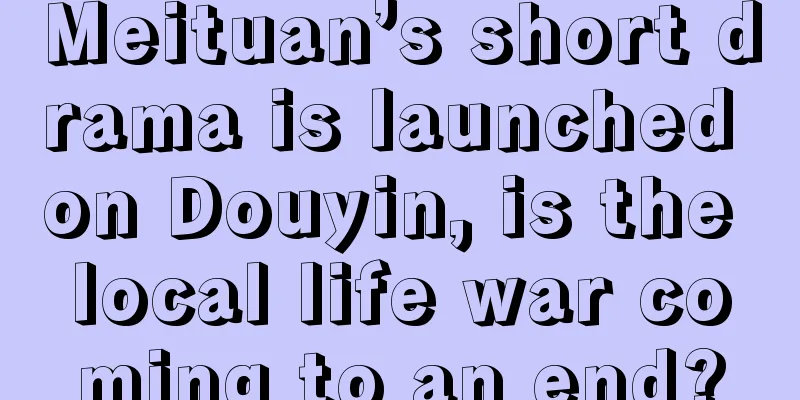
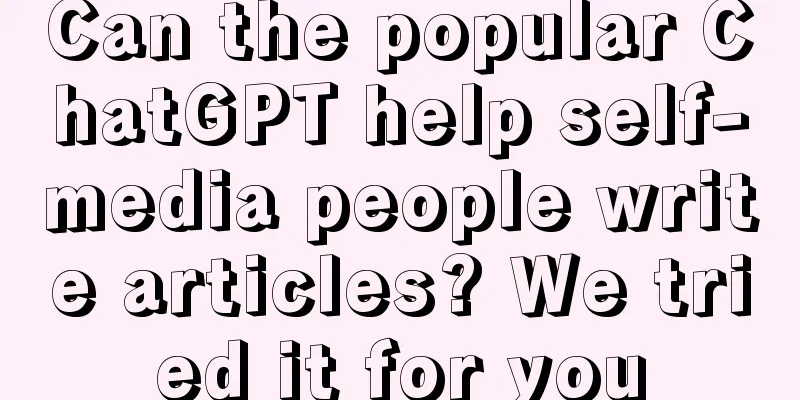
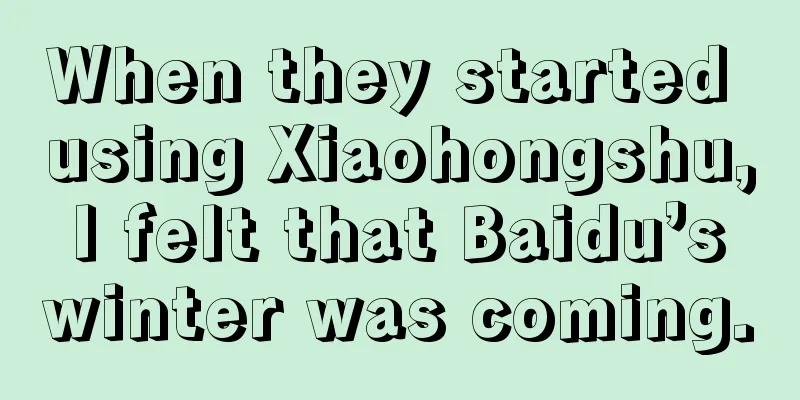
![2022 Christmas Creative Review [Part 2]](/upload/images/67e77eb326acf.webp)
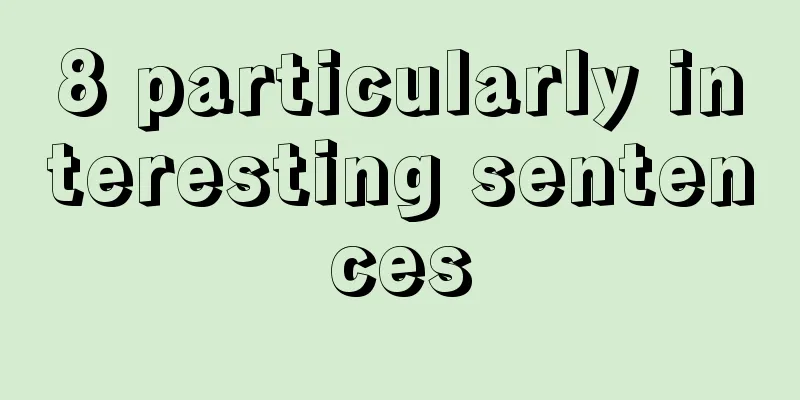
![Xiaohongshu's popular article routine [August]](/upload/images/67e758945a67d.webp)
